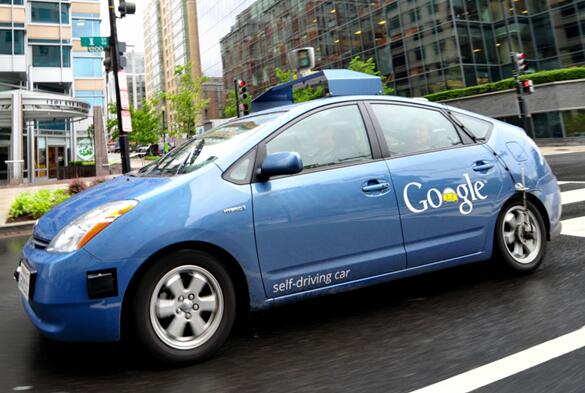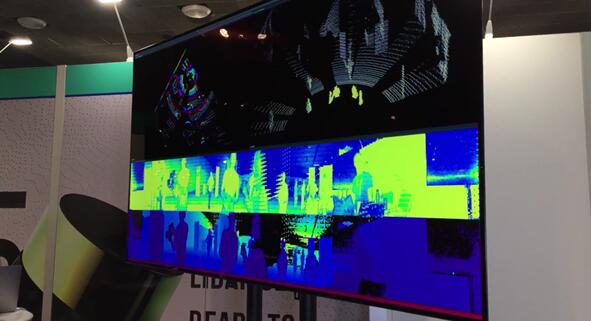In the mid-2000s, Velodyne invented modern 3D (3D) LiDAR (Lidar) scanners. But in recent years, the traditional wisdom is that Velodyne's design (installing 64 lasers on a rotating platform) will soon be phased out by a new generation of solid-state LiDAR sensors that use only a single fixed laser for scene scanning. Want to know more about it? Look at the content below. This article refers to the address: http:// But a startup called Ouster is trying to challenge this idea by selling Velodyne-like rotary mechanical LiDAR at a very competitive price. Recently, we had the privilege of having a conversation with Ouster CEO Angus Pacala, who has a unique and professional perspective on the trade-offs between rotary and solid-state LiDAR, as Pacala was previously the most famous startup of solid-state LiDAR, Quanergy. Co-founder. In our conversation, Pacala refused to evaluate his predecessor company. But action is better than eloquence. We can think that as the co-founder of Quanergy, Pacala definitely knows the advantages and disadvantages of solid-state LiDAR technology. When he decided to create another LiDAR company, he decided not to do solid-state LiDAR, which may explain some problems. "Solid LiDAR" is actually a generic term for several types of non-rotating mechanical LiDAR designs. It can be divided into three technical solutions: one is MEMS (Micro Electro Mechanical Systems) scheme, which uses a micro MEMS scanning mirror to control the laser beam; the other uses a technique called optical phased array to control the laser beam without Any moving part; the third, called the Flood Imaging LiDAR, does not require beam steering, illuminates the entire scene with a single flash, and then returns through a two-dimensional array image sensor similar to a digital camera. The light. Although Pacala's previously founded Quanergy did not explain its technical details in detail, according to the report, the company mainly used optical phased array solutions. All three designs offer a stronger, more economical LiDAR sensor due to the small or no moving parts. In the long run, the industry advocates the integration of almost all electronic devices, including the laser itself, beam control circuitry, detectors, and computing support. As a result, the solid-state LiDAR in future consumer products is likely to be installed in the top of the car in order to function properly, unlike the rotary mechanical LiDAR. This sounds good in theory, and Pacala probably thought so when he co-founded Quanergy in 2012. However, he later changed his mind because his second LiDAR venture used a more traditional rotary mechanical LiDAR solution. Rotary mechanical LiDAR has its unique advantages Pacala points out several advantages of traditional rotary mechanical LiDAR design. Among them, the most obvious advantage is its 360° field of view. We can mount a laser radar on the top of the car to sense the situation around the car 360°. In contrast, solid-state LiDAR needs to be fixed in some suitable position (such as the front and rear or four corners of the car body), and the field of view is generally 120° or less. Therefore, autonomous vehicles using solid-state LiDAR sensors require at least four units to achieve the same coverage as rotary mechanical LiDAR. Another less obvious advantage is that human eye safety regulations allow moving laser sources to emit higher power than fixed laser sources. According to Pacala, all Level 1 safety systems must be designed to ensure that personnel do not look directly at the laser device for a few seconds and remain harmless. When using a solid-state scanning unit, if the human eye is a few inches from the laser scanner, 100% of the laser light may be injected into the eye. However, if a rotary LiDAR sensor is used, the laser is concentrated only in a specific direction, only a small portion of the 360° rotation. Therefore, the rotary LiDAR can provide higher power for each laser pulse without causing eye damage. This makes it easier to detect retroreflected light, so for the foreseeable future, a rotating LiDAR unit may have a larger detection range advantage than a solid-state LiDAR unit. The picture above shows Google's early autopilot prototype. There is a huge rotating LiDAR sensor on the roof, a black radar on the front fender (four in total), a "wheel encoder" on the rear wheel and a video camera in the car. The prototype is equipped with a variety of sensors for a total price of up to 150,000 US dollars At the same time, most of the leading solid-state LiDAR designs face the significant challenge of “long-range detectionâ€. Microscanning mirrors in MEMS systems can project a limited amount of laser light. This makes it difficult for distant objects to reflect the laser beam and be detected. Compared to other technologies, the optical phased array scheme produces a beam that is more divergent, making it difficult to combine long distances, high resolution, and wide field of view. For floodlight imaging LiDAR, each time the emitted light is scattered throughout the field of view, this means that only a small fraction of the laser will project to a particular point. In addition, each pixel in the photodetector array must be very small, limiting the amount of reflected light it can capture. “The solid-state LiDAR solution is a big challenge,†Pacala said. He proposed that the traditional rotary LiDAR technology has unique advantages and will continue to maintain a certain market position in the next decade, especially in the high-end market. According to Pacala, most LiDAR systems will gradually be converted to solid-state solutions in the next decade, but there will still be some rotary mechanical LiDAR sensors with real high performance and high value. Pacala used the hard disk market to make an interesting metaphor. Around 15 years ago, solid-state storage devices became more and more popular, especially in mobile devices. However, there are still a large number of conventional hard disk drives with rotating disks that are still being sold today. Because this design provides the perfect combination of high capacity and low cost. Similarly, Pacala expects that future low-end lidar devices will mostly use solid-state design, just as most mobile devices today use solid-state storage. But for the most demanding applications, including autonomous vehicles, he expects high-end rotary LiDAR to also occupy an important market position, providing long range, high resolution and a wider field of view. Ouster brings price pressure to Velodyne Although Ouster uses the same basic technical solutions as Velodyne, Ouster offers a transparent and aggressive pricing solution that may give Velodyne a little headache. Real-time demonstration of the 64-line OS-1 at the show site Ouster currently offers three LiDAR models: a low-end 16-line LiDAR sensor OS-1 for $3,500, a 64-line OS-1 version, priced at $12,000, and a longer detection range of 64. The line sensor OS-2 is priced at $24,000. What is the price of Velodyne's products? Velodyne's 16-line LiDAR "sensing hockey" is priced at $4,000, which is roughly equivalent to Ouster's $3,500 16-line model. Just last December, Forbes reported that the price of Velodyne's 64-line model is still as high as $75,000, a slight decrease from the $85,000 a decade ago.
Description of Right Angle D-SUB Connector
The right angle d-sub is an ideal connector solution for applications where space is at a premium and there is little to no room for connectivity & cabling. The 90° angle cable exit allows for increased mounting options and versatility of design for those tighter, more compact application needs such as computer servers and industrial robotics.
Antenk RIight's Angle Standard D-SUB Connector Series Including:
Standard D-Sub Right Angle Machined
Standard D-Sub Right Angle Stamped
Antenk RIight Angle High Density D-SUB Connector Series Including:
High Density D-Sub Right Angle Stamped
Antenk's RIight Angle D-SUB Connector Options
Number of Rows
Shell Size
Mounting Style
Packaging
Gender
Shell
TARGET MARKET / APPLICATION
Communications
Base Stations
Switching
Transmission
Asymmetric Digital Subscriber Line (ADSL)
Data
Desktops/ Laptops
UPS, Storage systems
Routers, Servers
Printers, Copiers
Consumers
Consumer Electronics
Set-top-boxes
Energy meters
Industrial & Instrumentation
Robotics
Control Drives
Power Supplies
Medical Instruments
Test Equipments
POS & Handheld terminals
Renewable Energy
Surveillance Camera
Office Automation
Parking Meters
Gaming Machines
Military
Military
Avionics
Military Equipment
Standard Density right angle D Sub Connector machined contacts, Right Angle High Density D-SUB Connector,Standard Density right angle D Sub Connector stamped contacts ShenZhen Antenk Electronics Co,Ltd , https://www.antenkcon.com

Standard & HD D-Subs SMT Right Angle & RA Zero Footprint Through Hole
VGA over Dual PS/2 ports Stamped Contacts
High Density D-Sub Right Angle Machined
Dual-Port D-Sub
Standard & HD D-Subs SMT Right Angle & RA Zero Footprint Through Hole
High Density D-Sub Right Angle Stamped
May 02, 2023